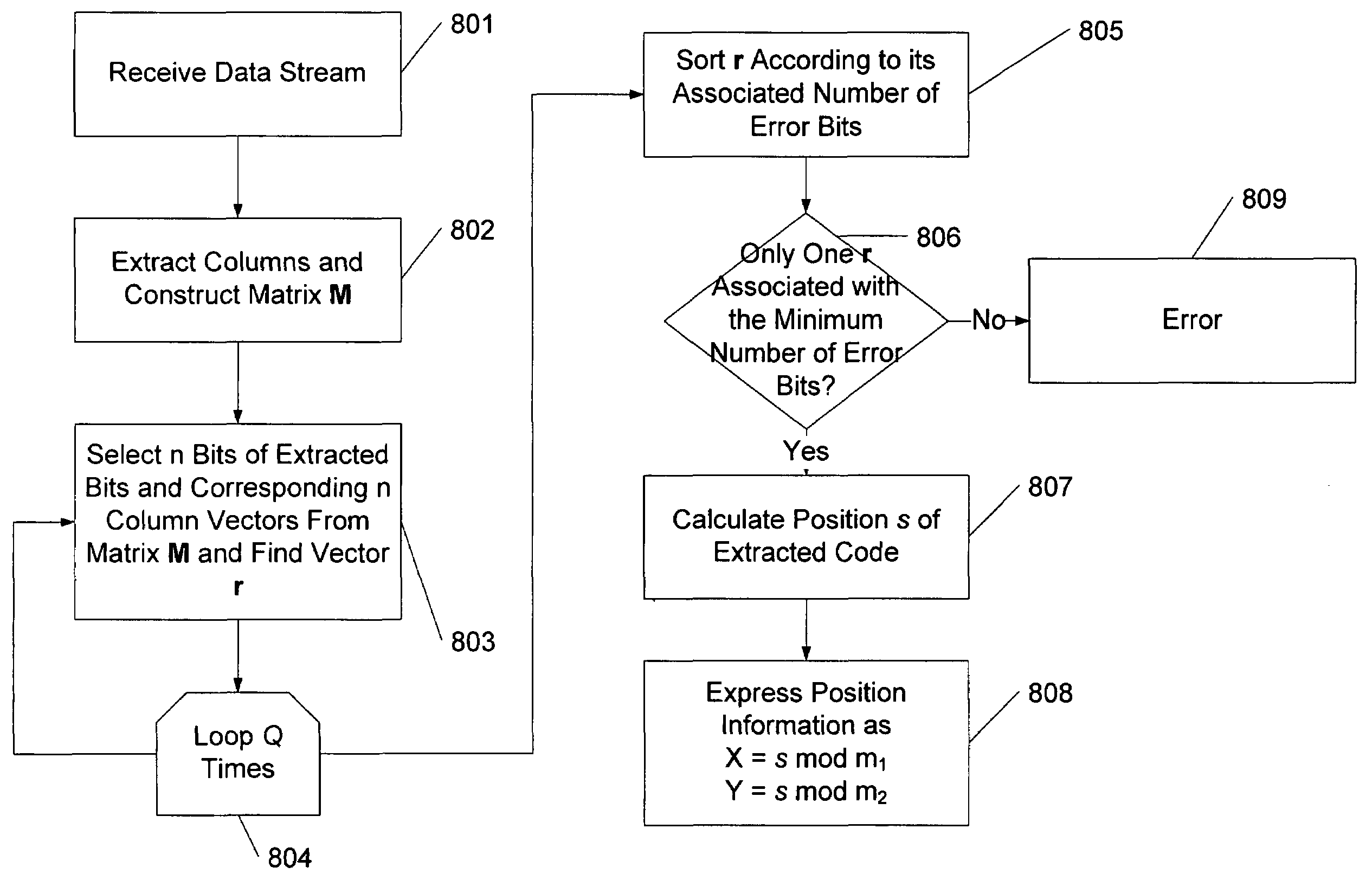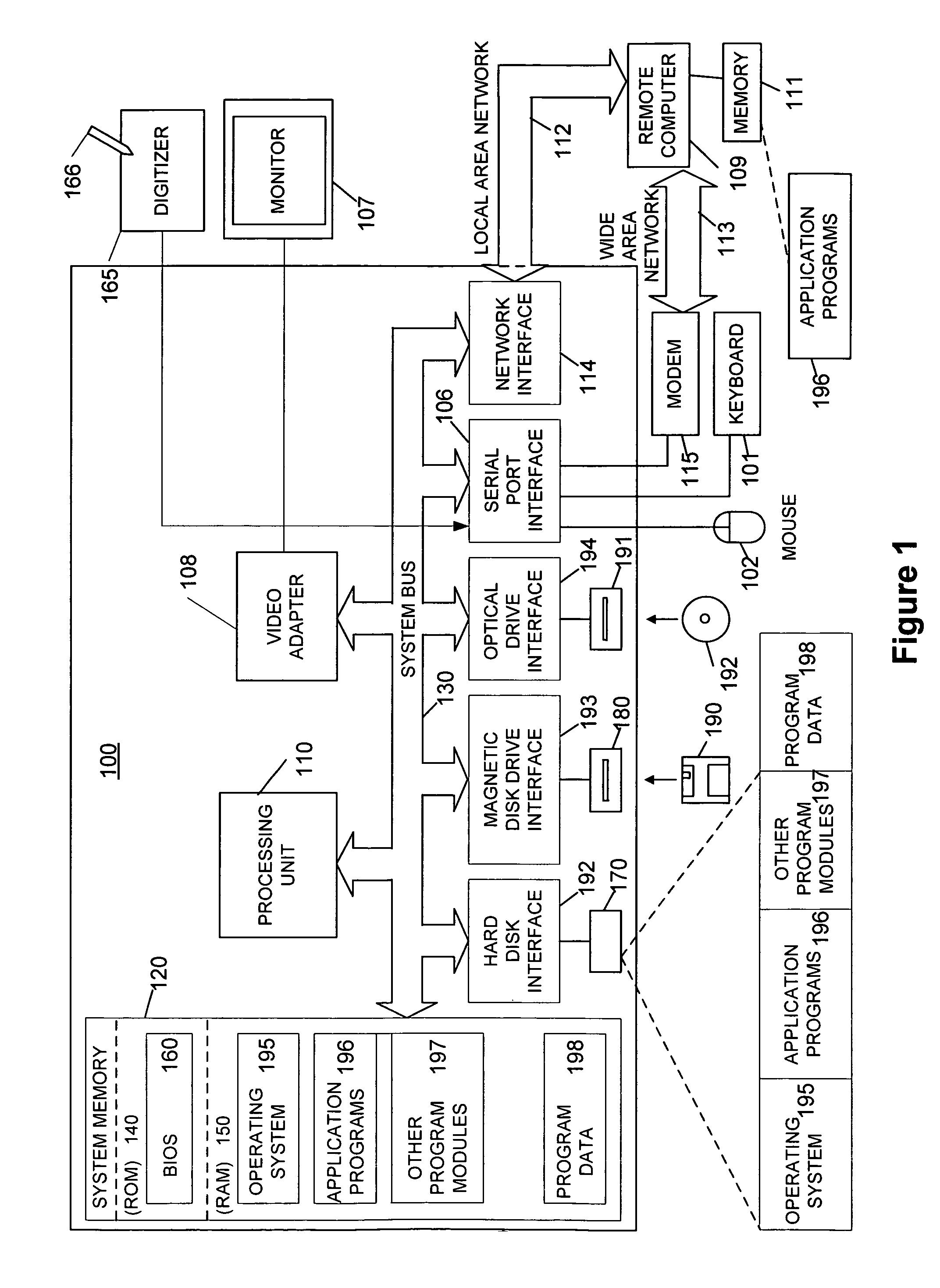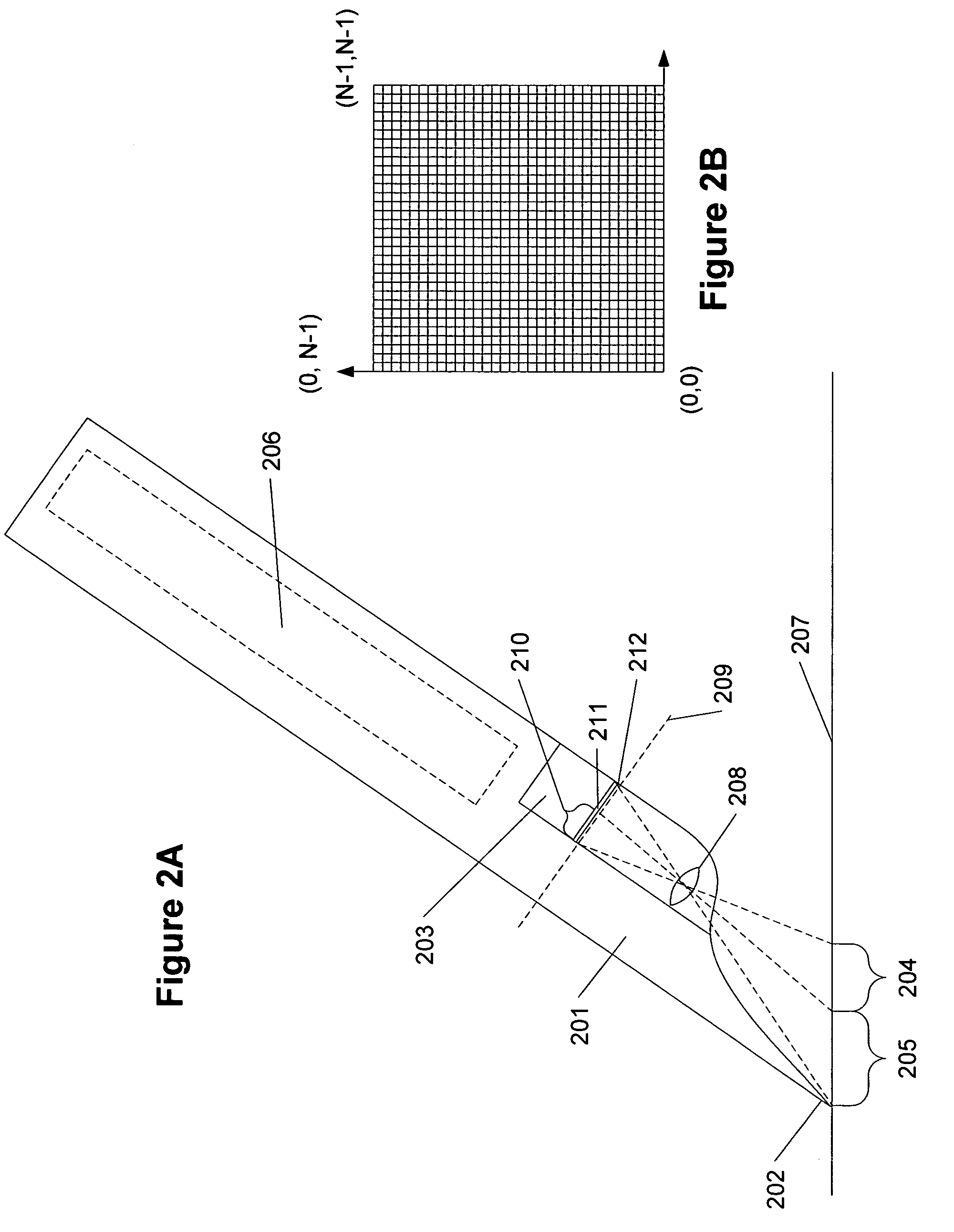Global metadata embedding and decoding
a global metadata and embedding technology, applied in the field of global metadata embedding and decoding, can solve the problems of not being able to modify scanned images, not being able to have annotations subsequently entered, and being difficult to handle the interaction between printed documents and electronic versions on a repeated basis
- Summary
- Abstract
- Description
- Claims
- Application Information
AI Technical Summary
Benefits of technology
Problems solved by technology
Method used
Image
Examples
Embodiment Construction
[0031]Aspects of the present invention relate to embedding global metadata in an embedded-interaction-code (EIC) document and decoding global metadata from an EIC document.
[0032]The following description is separated by subheadings for the benefit of the reader. The subheadings include: Terms, General-Purpose Computer, Image Capturing Pen, Encoding of Array, Decoding, Error Correction, Location Determination, Global Metadata Encoding, and Global Metadata Decoding.
Terms
[0033]Pen—any writing implement that may or may not include the ability to store ink. In some examples, a stylus with no ink capability may be used as a pen in accordance with embodiments of the present invention.
[0034]Camera—an image capture system that may capture an image from paper or any other medium.
General Purpose Computer
[0035]FIG. 1 is a functional block diagram of an example of a conventional general-purpose digital computing environment that can be used to implement various aspects of the present invention. ...
PUM
 Login to View More
Login to View More Abstract
Description
Claims
Application Information
 Login to View More
Login to View More - R&D
- Intellectual Property
- Life Sciences
- Materials
- Tech Scout
- Unparalleled Data Quality
- Higher Quality Content
- 60% Fewer Hallucinations
Browse by: Latest US Patents, China's latest patents, Technical Efficacy Thesaurus, Application Domain, Technology Topic, Popular Technical Reports.
© 2025 PatSnap. All rights reserved.Legal|Privacy policy|Modern Slavery Act Transparency Statement|Sitemap|About US| Contact US: help@patsnap.com



